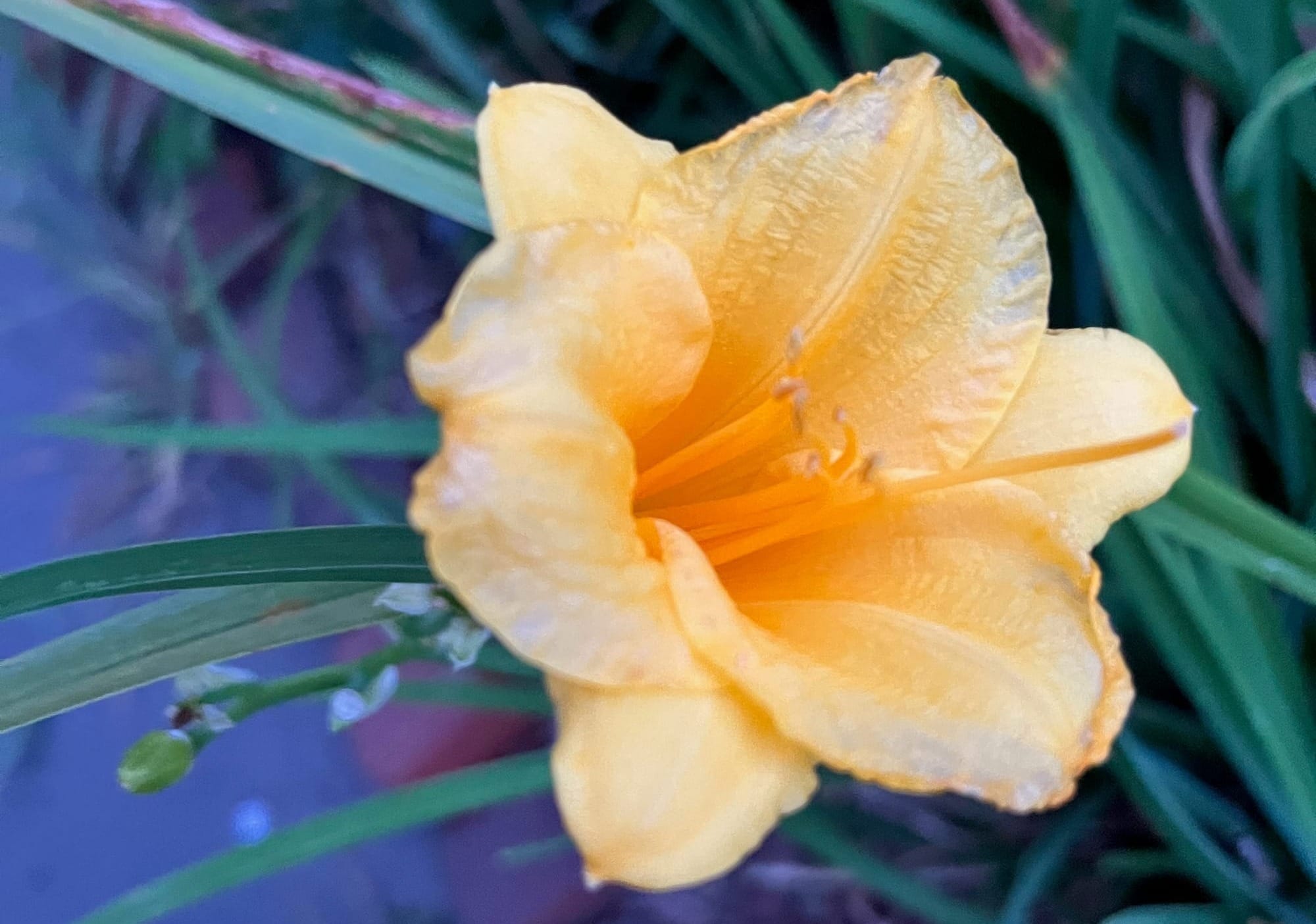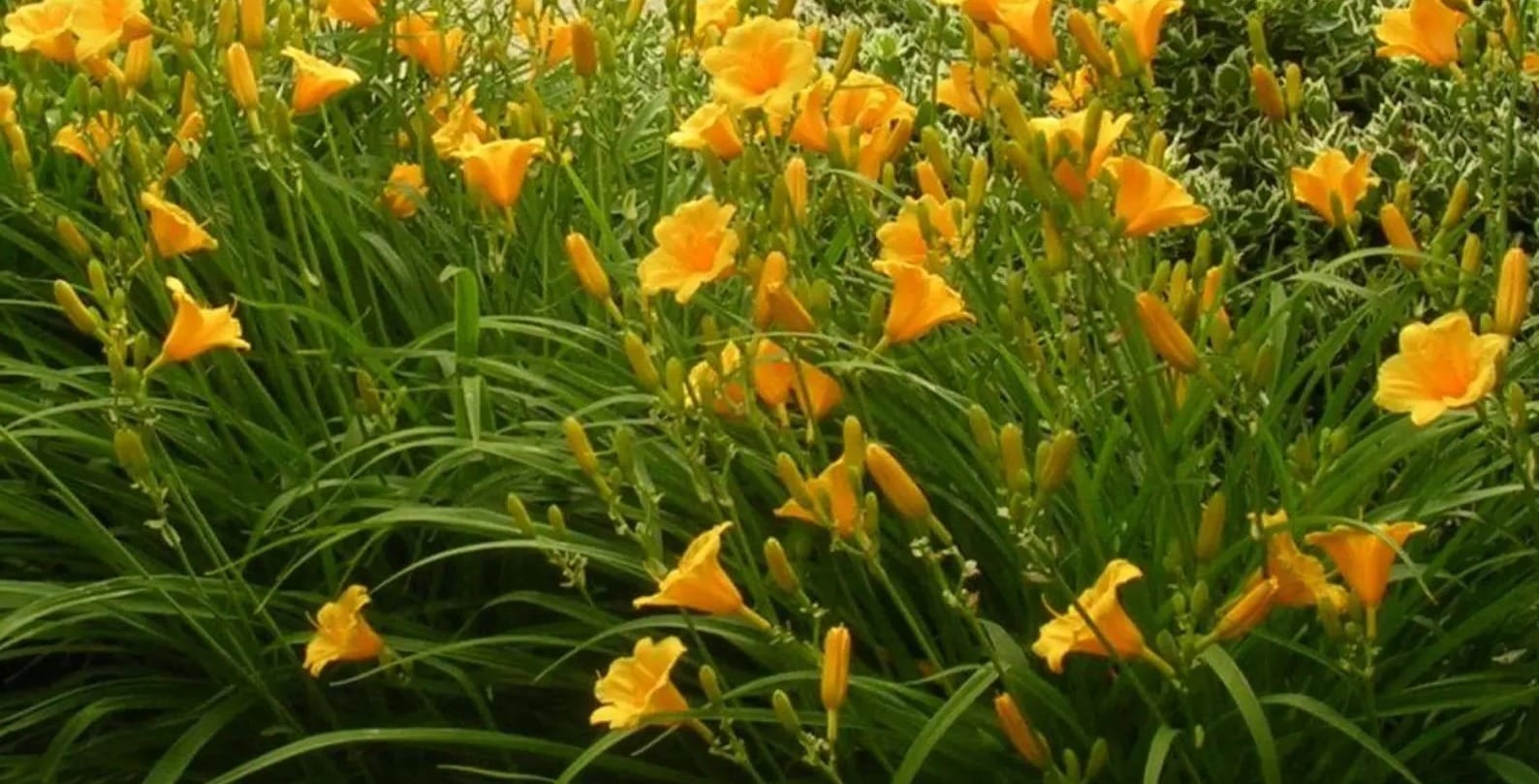Re-Re-Re-blooming Stella de Oro Daylily
Seriously, the Hardest Working Flower in the Landscaped Garden

I don’t know when I first became aware of this flower. I just remember looking around earlier this spring and realizing that Stella was operating on a completely different level than most other flowers I was seeing around town. It is everywhere, at least here in northwest Missouri. Somehow it became one of the most popular, if not the most popular, landscaping flowers. Based on how often I see it, I wouldn’t even be surprised if it’s the single most commonly planted flower in existence.
It’s so common that, like many over-used landscaping plants, it becomes irritating for people who prefer flowers that feel rare or unique. “Not another clump of Stella de Oro.”
There are big reasons it became irresistible to landscapers and everyday gardeners: it blooms early in the season and it blooms late in the season. (While blooming also in the middle.) And it is nearly impossible to kill. Tough but not invasive. Bright enough that you notice it from a distance. Compact, tidy foliage. You put it in the ground and it performs with minimal intervention. Also known as set it and forget it.
The problem, at least for people like me, is that it’s almost aggressively dull. It is not special. It’s a victim of its own success. It does its job too well. It fills space and looks fine in a landscape, but nobody is pulling over to take a photo of it. (Except me, for the sake of this article.)

As a hybridizer, I couldn’t help wondering if it might be possible to combine some of the better colors and flower shapes of the more beautiful daylilies with Stella’s ultra-long blooming season. Basically, a better looking daylily that also blooms a lot longer.
I have some real showstoppers in my garden, but they bloom for just a few weeks and then they are finished for the year. And when they bloom, they’re spectacular. But that also means I could be looking at ten or eleven months of greenery and zero flowers. Not ideal. Stella can start blooming in May, and as I’m writing this in late October, they are still blooming all over town. That is far beyond a normal daylily’s bloom window. And honestly, longer than most flowers in general. Even many roses struggle to keep up with Stella.
Since I always seem to need one more project, I decided to at least try crossing Stella with something more interesting. When I started researching, I found out Stella is a diploid, not a tetraploid. If you hybridize flowers, you know things like this happen. I don’t know the exact percentage, but based on what I’ve seen, probably ninety-five percent of modern daylilies are tetraploid. Tetraploids offer more traits to work with: color, bloom size, bloom shape, edging, ruffling, patterning, etc. So I ended up with a new problem, I don’t have any obvious diploid daylilies growing here.
I’ve been shopping around for diploid seeds I can start indoors this winter, then plant outside in spring to give them a six to seven month head start. While walking through the local university, which is loaded with Stellas in their landscaping everywhere, I collected seeds from a dried pod and managed to germinate one. I could germinate more, but I don’t necessarily want many duplicates of a self-pollinated Stella. It will likely be something that looks identical to Stella.
And while I was out of town buying plants and bulbs at a greenhouse, I noticed a shelf full of potted Stellas for about six dollars each. I took that as a sign and brought one home to plant in the garden. Those should bloom this spring, so once I have other flowering diploids, I can see what is possible.
If you look up Stella on Garden.org, there are already around 180 registered crosses made with it. So it’s not a new idea. They just are not in my garden. There are other colors of Stella available, but I'm looking for more of a bridge between fancy daylilies and Stella, not a purple sport of Stella. (Or however those are created.) But there is still a gap for daylilies that look spectacular and bloom longer. Multiple shapes, multiple colors, and a longer bloom schedule. I’ll post updates once I have seedlings worth talking about. Incidentally, I did take seeds from my last blooming fancy daylily (tetraploid) a couple months ago. That's another way to do this. Grow seeds from the ones you have that are late bloomers, or longer blooming than everything else, and see if you can get more of that trait.
© Copyright Terry Aley
The Aley Acres seed shop on Etsy.
Dahlias, Notes from a Gardener book on Amazon.
Floral Art and Landscape Painting Etsy shop.
TikTok, some gardening posts.
